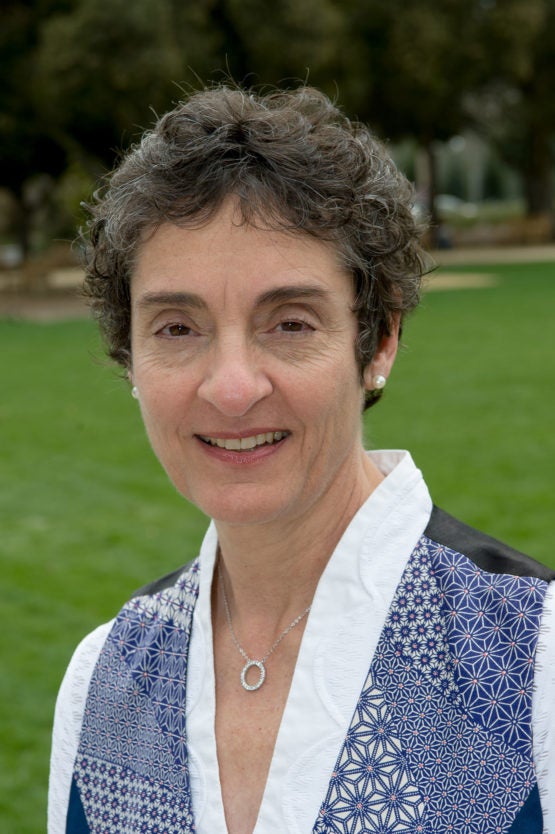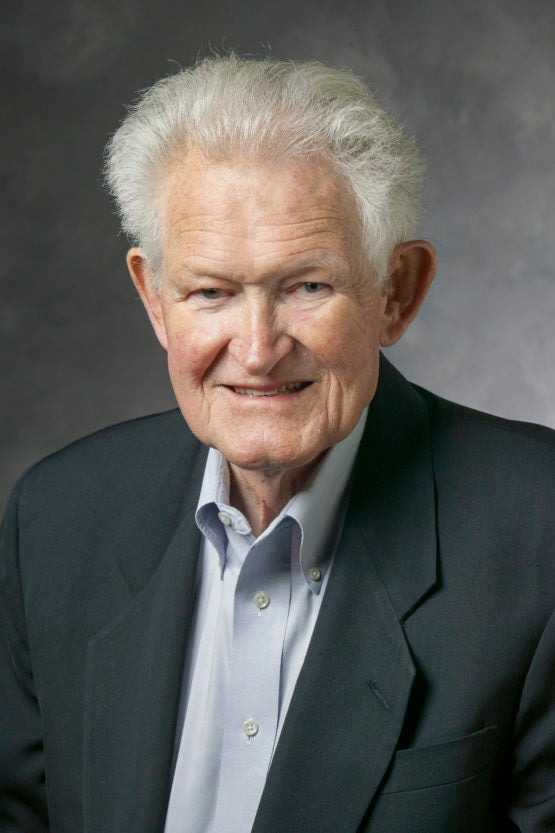Two Stanford professors win prestigious Kavli Prizes
Carla Shatz has won the Kavli Neuroscience Prize for her work in understanding how the brain forms the proper connections and Calvin Quate has won the Kavli Nanoscience Prize for his lead role in inventing the atomic force microscope.
Two Stanford professors have won the 2016 Kavli Prize, a biannual award with prizes given in astrophysics, nanoscience and neuroscience.
One Stanford winner was Carla Shatz, professor of neurobiology and of biology and the director of Stanford Bio-X. She won the Neuroscience Prize along with Eve Marder of Brandeis University and Michael Merzenich of the University of California, San Francisco for the discovery of mechanisms that allow experience and neural activity to remodel brain function. The other was Calvin Quate, emeritus professor of electrical engineering and of applied physics, who has won the Nanoscience Prize along with Gerd Binnig, former member of IBM Zurich Research Laboratory, and Christoph Gerber, of the University of Basel, for the invention of atomic force microscopy.
Go to the web site to view the video.
“Carla Shatz and Calvin Quate are pioneers in their fields, and the Kavli Prize reflects the significance of their groundbreaking contributions that have advanced our knowledge of neuroscience and nanoscience,” said Stanford President John L. Hennessy. “For Stanford to have dual winners is an extraordinary honor and affirms the wide-ranging impact of the interdisciplinary research being done at the university.”
The Kavli Prize is a partnership among The Norwegian Academy of Science and Letters, The Kavli Foundation and The Norwegian Ministry of Education and Research. Winners of each prize will receive a gold medal and share $1 million (U.S.), given during an awards ceremony in Oslo.
Previous Stanford winners include Thomas Südhof, the Avram Goldstein Professor in the School of Medicine, who went on to win the 2013 Nobel Prize in Physiology or Medicine, and Andrei Linde, the Harald Trap Friis Professor of Physics.
Carla Shatz
Shatz has spent her career understanding how the brain’s wiring takes shape during development, particularly in the region of the brain that receives information from the eyes. This work has had implications for understanding learning and in neurodegenerative disease.

Carla Shatz (Image credit: Steve Fisch)
“As a scientist I do what I do because I love going to work every day,” Shatz said upon learning she had received the prize. “Getting this kind of recognition in my field is an incredible gift and I feel very grateful.”
Shatz uncovered mechanisms the brain uses to determine which of the myriad brain connections present before birth get strengthened and which are pruned to create our adult wiring. These same mechanisms are at play – albeit far less flexibly or frequently – throughout life. Her work revealed that as the brain develops, neurons that fire at the same time form stable connections. Those that fire out of sync lose their connections and get pruned back. This discovery led to the phrase, “Cells that fire together, wire together,” along with, “Cells that fire out of sync, lose their link.”
Shatz also pioneered the discovery that certain well-known proteins once believed to be in the exclusive employ of the immune system also moonlight in the brain, where they play a key role in detecting which neurons are firing out of sync and should be pruned back. In mouse models, she and her colleagues have shown that manipulating the availability of some of these proteins might be able to reverse brain damage that occurs in Alzheimer’s disease and stroke.
“This was exciting because it was the first time anybody could show a role for these proteins in the brain,” Shatz has said. She said at the time people thought her findings were incorrect, or that the immune system was controlling the way the circuits formed. In later work she was able to show that the proteins, called MHCs, were active in neurons.
Shatz received her undergraduate degree from Radcliffe College and then did her graduate work at Harvard where she studied under David Hubel and Torsten Wiesel, the 1981 recipients of the Nobel Prize in Physiology or Medicine, who stimulated her lifelong interest in understanding how the brain’s activity controls its wiring.
In 1976, Shatz became the first woman to earn a PhD in neurobiology from Harvard University. She moved to Stanford University in 1978, and then took a faculty position at UC-Berkeley in 1992. She returned to Harvard in 2000 as the first woman to chair its Department of Neurobiology. In 2007, she rejoined Stanford to become the director of Stanford Bio-X, the landmark bioscience research effort that promotes interdisciplinary collaborations among life scientists, medical scientists, engineers, physicists and other disciplines.
Shatz has said that moving to Stanford and having a lab in the interdisciplinary Clark Center, which is a hub for Bio-X, has increased her collaborations and expanded the kinds of science she can do. “Now we have this fabulous collaboration with a serious immunology lab and because of it we may be able to make new drugs that might even work to treat Alzheimer’s one day,” she has said.
Shatz, who is the Sapp Family Provostial Professor, is a past president of the Society for Neuroscience. She is also a member of the Stanford Neurosciences Institute, the American Academy of Arts and Sciences, the National Academy of Sciences, the Institute of Medicine, the Royal Society (London) and the American Philosophical Society. Among the numerous prestigious awards that she has won over the course of her career are the Gruber Prize (2015), the Sackler Prize (2013) and the Society for Neuroscience’s Gerard Prize (2011).
Calvin Quate
Throughout his career, Quate invented transformational imaging and sensing technologies that continue to be used in research labs around the world, and even on the surface of Mars. Along with Ross Lemons, he developed the scanning acoustic microscope in the early 1970s. His crowning achievement, which the Kavli Foundation has awarded, came in 1986 with the introduction of the atomic force microscope (AFM).

Calvin Quate (Image credit: Courtesy School of Engineering)
Optical microscopes are limited by light diffraction; because of the way light waves scatter, there is a limit to the amount of magnification possible with a classic microscope. The atomic force microscope uses a different concept to explore microscopic surfaces: touch.
A stylus with a small tip – less than 30 nanometers wide – moves across the surface of the object, bobbing up and down as it passes over the topography of the surface. When the stylus tip crosses a change in the surface, force passes from the stylus to an attached cantilever, which flexes. Instruments record the cantilever’s flexing to create an image accurate to the atomic level.
This invention evolved from another kind of scanning microscope invented by IBM researchers in 1981: the scanning tunnel microscope. This microscope was revolutionary at the time but limited; because it used electrical impulses to scan a surface, it could only image conducting materials.
Quate was on an airplane over Iceland en route to London in 1982 when he read the first article describing the scanning tunnel microscope. He changed his plans to route through Zurich to see the device in action. He was so impressed that he persuaded two of the researchers involved, Gerd Binnig and Christoph Gerber, to come to Stanford and IBM in San Jose for a year to work with him in 1985. Quate shares the Kavli Prize with these two researchers.
The three engineers built a prototype and soon realized the tip could be modified to scan almost any kind of surface, including cells and biological molecules. Their article describing their invention was initially rejected by the prominent physics journal Physical Review Letters. Apparently, the word “atomic” in the name of the microscope was too farfetched; the reviewers did not believe that the AFM could actually image individual atoms. In fact, the first images were on a larger scale, but Quate and his colleagues managed to argue their way into the journal. Images on the atomic scale soon followed, and before long the microscope was being used in applications such as imaging DNA digestion by an enzyme.
Quate predicted that the AFM’s applications would be broad and numerous for modern and future research. “It’s one of the few tools you can use to examine that world, which is becoming more and more prominent as we move forward with nanotechnology,” Quate has said. Indeed, AFM became the foundation of the nanotechnology industry and is instrumental in nanofabrication, the manufacturing of tiny structures.
Its applications are not limited to our planet alone – the European Space Agency mission to comet 67p/Churyumov-Gerasimenko and the NASA Phoenix Mars Lander mission both carry atomic force microscopes to analyze comet and Martian dust, respectively.
Quate was born in the small desert town of Baker, Nev., on Dec. 7, 1923. He was educated in a one-room schoolhouse until he was 11, when his family moved to Salt Lake City. He earned a bachelor of science in electrical engineering from the University of Utah in 1944 and a PhD in electrical engineering from Stanford in 1950. He then worked at Bell Laboratories and Sandia National Laboratory before joining the Departments of Applied Physics and Electrical Engineering at Stanford in 1961. He chaired the Applied Physics Department from 1969 to 1972, and again from 1978 to 1981. He was the associate dean for the School of Humanities and Sciences from 1972 to 1974 and from 1982 to 1983, and the acting chairman for the Department of Electrical Engineering from 1986 to 1987.
